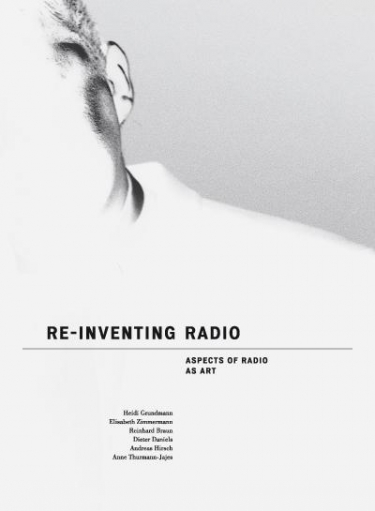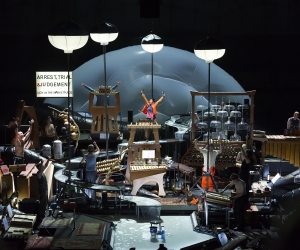
“While the death of radio as a mass medium is once again being predicted as imminent, recent developments in transmission technology underline what has long been evident: radio is not about the transmission of sound but of signal.” So states this self proclaimed “archive-in-progress” of radio art. This fascinating tome-like volume also serves as a catalogue book to a first exhibition of radio art at the Weserburg-Museum of Modern Art in Bremen, Germany. If there is one message from this book it is that radio-art–transmission culture is alive and well. With over forty articles and 527 pages, written by international artists, curators, media theorists, and historians, this multifaceted book has a plethora of interesting essays, both historical and contemporary, on the state of radio art in our digital world. It serves as a kind of mini-lexicon for the world of transmission art or what some might also call telematic art.
The opening paragraph of Frederich Kittler’s essay beautifully sums up (with a nod to John Cage) what “listening” to the radio is. And Dieter Daniels excellent article compares the early wireless age from the 1880s through the 1920s, with the succession from John Cage to Max Neuhaus as re-inventors of radio, along with today’s YouTube practitioners. A lengthy article by Candice Hopkins on Hank Bull’s experiments in radio art at the Western Front in Vancouver, B.C., provides the reader with a glimpse into early developments of transmission art. Robert Adrian’s radio-art manifesto—a set of twelve aphorisms—includes the following: “Radio happens in the place it is heard and not in the production studio.” Adrian also discusses links between radio art and conceptual art, and consumable and non-consumable art in his interview with Daniel Gilfillans in “Networked Radio Space and Broadcast Simultaneity.”
The central idea of this volume is that radio art is not just about another type of transmission. Today’s radio artists see the new communications technologies such as cell phones and the Internet as extensions of radio. They present an argument that radio is not about broadcasting but about a communications space, and, of course, about the ever-important question of who controls the communications space. While the articles in this book give us insight into the world of telecommunications, many of them also delve into our socio-political relationship with the digital world.
My only disappointment about this book is that is lacks an index. It does, however, provide extensive Internet links for each article and the last date that these links were accessed.
Re-Inventing Radio is a book with many topical and piquant ideas about the convergence of old and new technologies and our ever-shifting paradigms with technological invention.


